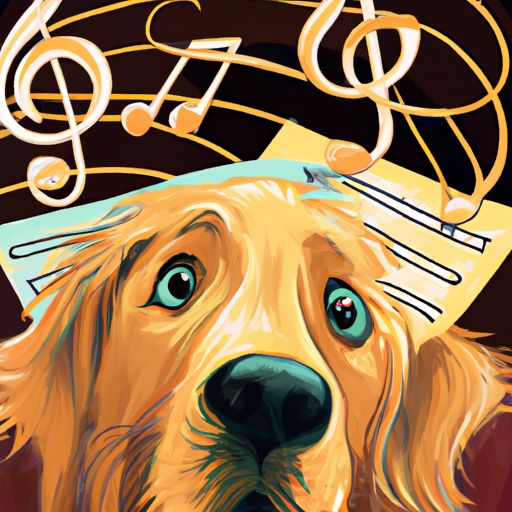As a caregiver, you’re likely to notice the tiniest details about your canine companions, including the adorable head tilt they make when you whistle. But have you ever wondered why they do this? Let’s delve deeper into this charming canine behavior.
1. Understanding Canine Hearing
To understand why dogs tilt their heads when you whistle, it’s crucial to understand their hearing capabilities first.
Dogs have an exceptional sense of hearing, far superior to humans. They can hear frequencies ranging from 40 Hz to 60,000 Hz, while humans can only hear between 20 Hz and 20,000 Hz. This means your dog can hear sounds that you can’t even perceive!
The Role of Ear Shape and Position
Interestingly, the shape and position of a dog’s ears also play a significant role in how they perceive sound. Some dogs have floppy ears that can partially block their ear canal, while others have upright ears that allow sound to easily enter their ear canals.
Table 1: Dog Breeds and Their Ear Types
| Dog Breed | Type of Ears |
|---|---|
| Beagle | Floppy Ears |
| German Shepherd | Upright Ears |
| Cocker Spaniel | Droopy Ears |
| Siberian Husky | Erect Ears |
2. The Head Tilt: A Sound Localization Technique
When dogs tilt their heads, they’re essentially adjusting their pinnae (the outer part of the ear) to better determine the source and distance of a sound. This action helps them process the information more accurately.
This behavior is particularly noticeable when you whistle because the high-frequency sound is intriguing to dogs and they want to locate its origin.
The head tilt may also help your dog perceive the emotional context of the sound. Is the whistle a call for dinner, a signal to go for a walk, or just a playful note?
3. Enhancing Vision
Besides improving their hearing, the head tilt also helps dogs enhance their vision. Dogs’ muzzles can obstruct their line of sight, especially for those with longer snouts.
By tilting their heads, dogs can get a better view of your facial expressions and body language, which are crucial for understanding your intentions.
4. It’s Just Too Cute!
Who can resist a dog tilting its head? This behavior is so endearing that we often respond with laughter, affection, or treats. Dogs quickly learn that a head tilt gets them positive attention, reinforcing the behavior.
5. Possible Health Concerns
Although head tilting is usually a cute and harmless behavior, incessant or sudden onset of head tilting could indicate a health issue, such as an ear infection, vestibular disease, or a neurological problem. If your dog displays this behavior excessively, it’s advisable to consult a vet.
FAQs
Q: Do all dogs tilt their heads when they hear a whistle?
A: Not all dogs tilt their heads when they hear a whistle. The behavior varies widely among individual dogs and breeds.
Q: Does the frequency of the whistle affect the head tilt?
A: Yes, dogs are more likely to tilt their heads in response to higher frequency sounds, such as whistles.
Q: Should I be concerned if my dog suddenly starts tilting its head more often?
A: If your dog starts tilting its head more often or shows signs of discomfort, it’s best to consult a vet. The behavior could be a sign of an ear infection or other health issue.
Q: Can I train my dog to tilt its head?
A: Yes, dogs can learn to tilt their heads on command. However, always ensure that your training methods are positive and do not cause stress to your pet.
In conclusion, the sight of a dog tilting its head at a whistle is more than just an adorable act – it’s a testament to their exceptional sense of hearing and their deep desire to understand us better. As caregivers, appreciating these little quirks can help us forge even stronger bonds with our furry friends.



